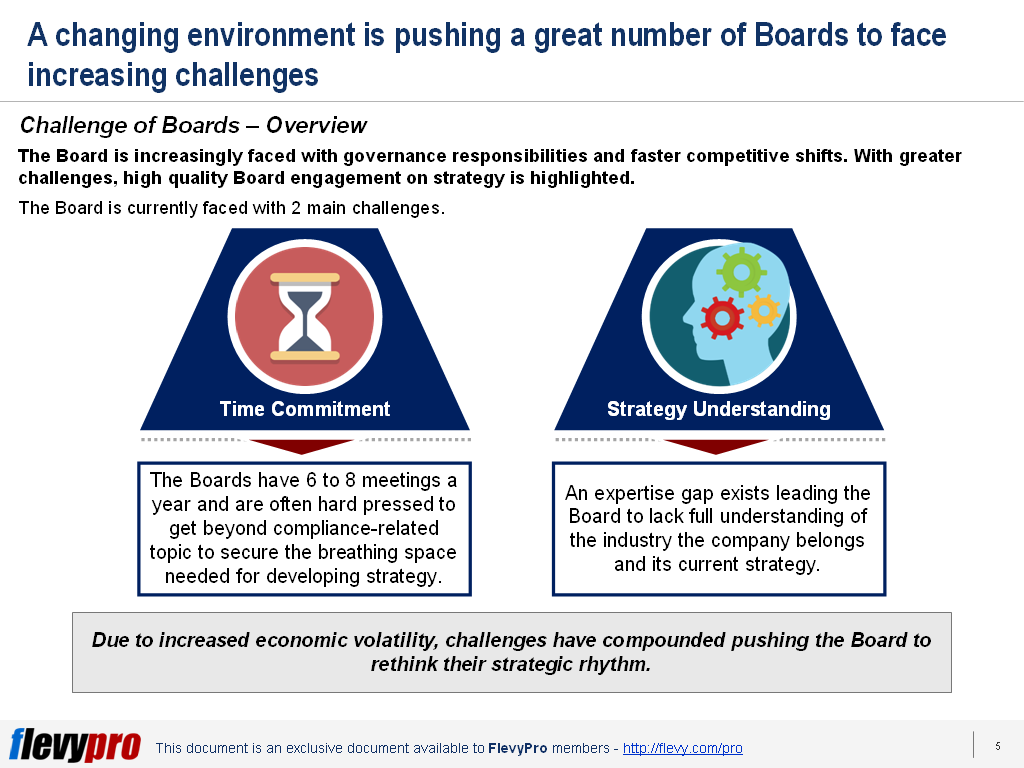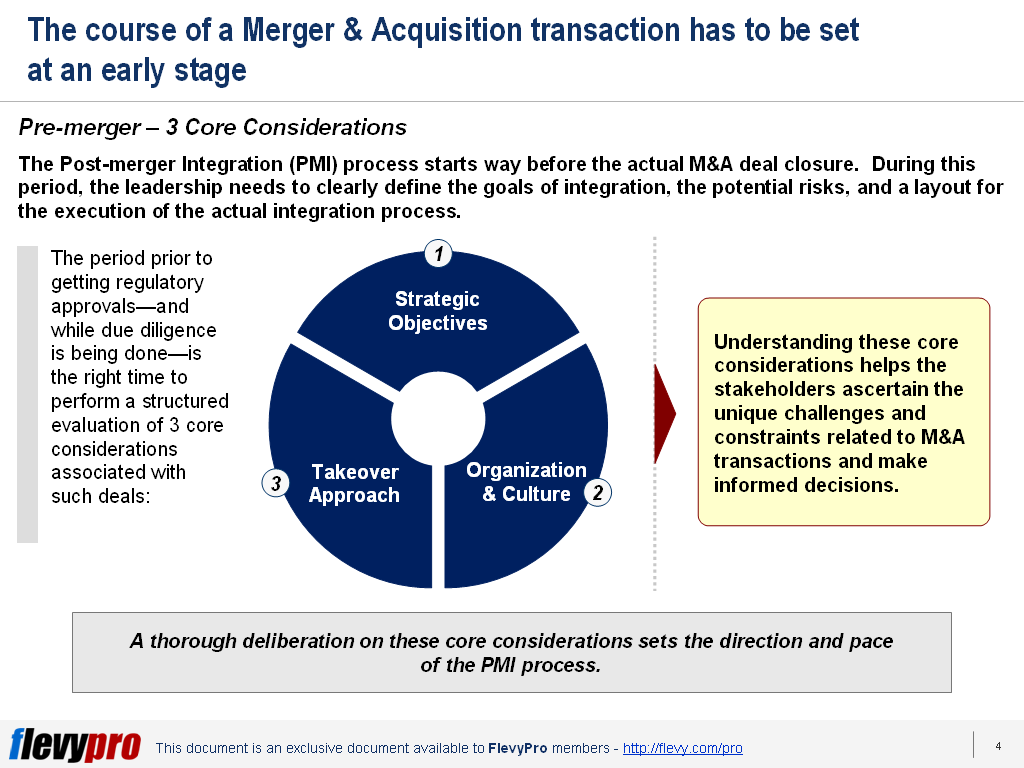3 Types of Capabilities-driven Mergers and Acquisitions
12 Jan

Editor’s Note: If you are interested in becoming an expert on Post-merger Integration (PMI), take a look at Flevy’s Post-merger Integration (PMI) Frameworks offering here. This is a curated collection of best practice frameworks based on the thought leadership of leading consulting firms, academics, and recognized subject matter experts. By learning and applying these concepts, you can stay ahead of the curve. Full details here.
* * * *
Mergers and Acquisitions (M&A) generally do not produce the outstanding results that they are envisioned and purported to provide. Some companies in certain industries, however, demonstrate consistent success when it comes to M&A.
A constant question across all industries, as far as M&As are concerned, pertains to the factors that differentiate organizations with successful histories. The magic ingredient in the success of these companies is their Corporate Strategy that utilizes Capabilities as the source for inorganic Growth. Capabilities-driven M&A have managed to raise shareholder value for the acquirer despite the tough years since the economic crisis of the 2000s. The majority of other inorganic Growth attempts produced a loss of value.
Companies employing the Capabilities-driven Strategy were recompensed with deals that had a Compound Annual Growth Rate (CAGR) average of 12 percentage points greater in shareholder return compared to M&A deals by other acquirers in that very industry and region.
Particular industries, for instance Information Technology and Retail, demonstrated a bigger effect. However, all industries displayed a steady, noticeable, Capabilities Premium in M&A. Capabilities-driven Strategy is exceptionally beneficial in M&A transactions where, frequently, time window is narrow and the risks elevated.
Capabilities Systems are defined as 3 to 6 reciprocally strengthening, distinguished Capabilities that are structured to hold up and drive Organizational Strategy, integrating people, processes, and technologies to create something of value for customers.
Setting apart likely M&A success factors is accomplished more easily by separating successful deals by their declared Intent consequently, capturing the dominant view regarding purpose of each deal.
Intent can be classified into 5 categories: Capability Access Deals, Product and Category Adjacency Deals, Geographic Adjacency Deals, Consolidation Deals, and Diversification Deals.
There is a lot of talk about Fit during M&A discussions. Fit does not mean introducing an ostensibly linked product or service, plugging a gap in a category, or moving in a new geography—such sorts of acquisitions are frequently unsuccessful.
Fit relates to unity, the benefit that ensues when Capabilities of a company fit mutually into a system, lining up to its market position, and employed to its complete array of products and services.
Deals when cross-categorized by their Capabilities System Fit, fall into following 3 categories:
- Enhancement Deals
- Leverage Deals
- Limited-Fit Deals
Let us delve a little deeper into the 3 categories.
Enhancement Deals
Enhancement deals enable the acquiring company to include new Capabilities so as to close gaps in its present Capabilities System or counter an alteration in its market.
Nearly 2/3rd of the deals studied—in a 2011 study spanning 8 sectors—used Capabilities to good effect, either by way of Enhancement or Leverage.
Leverage Deals
Leverage deals are where the acquirer makes use of prevailing Capabilities System in their company to handle incoming products and services, customarily augmenting the acquired company’s performance.
Leverage deal are frequently low-risk deals that may not require the acquirer to alter anything concerning its inhouse Capabilities System to make it work.
Limited Fit Deals
Limited-fit deals are deals where the purchasing company generally ignores Capabilities. Normally such deals provide a purchaser with product or service that need new Capabilities.
Interested in learning more about Capabilities-driven M&A? You can download an editable PowerPoint on Capabilities-driven M&A here on the Flevy documents marketplace.
Want to Achieve Excellence in Post-merger Integration (PMI)?
Gain the knowledge and develop the expertise to become an expert in Post-merger Integration (PMI). Our frameworks are based on the thought leadership of leading consulting firms, academics, and recognized subject matter experts. Click here for full details.
M&A is an extremely common strategy for growth. M&A transactions always look great on paper. This is why the buyer typically pays a 10-35% premium over the of the target company’s market value.
However, when it comes time for the Post-merger Integration (PMI), are we really able to capture the expected value? Studies show only 20% of organizations capture projected revenue synergies and only 40% capture cost synergies. Not to mention, the PMI process is typically very painful, drawn out, and politically charged, often resulting in the loss of key personnel.
Learn about our Post-merger Integration (PMI) Best Practice Frameworks here.
Do You Find Value in This Framework?
You can download in-depth presentations on this and hundreds of similar business frameworks from the FlevyPro Library. FlevyPro is trusted and utilized by 1000s of management consultants and corporate executives. Here’s what some have to say:
“My FlevyPro subscription provides me with the most popular frameworks and decks in demand in today’s market. They not only augment my existing consulting and coaching offerings and delivery, but also keep me abreast of the latest trends, inspire new products and service offerings for my practice, and educate me in a fraction of the time and money of other solutions. I strongly recommend FlevyPro to any consultant serious about success.”
– Bill Branson, Founder at Strategic Business Architects
“As a niche strategic consulting firm, Flevy and FlevyPro frameworks and documents are an on-going reference to help us structure our findings and recommendations to our clients as well as improve their clarity, strength, and visual power. For us, it is an invaluable resource to increase our impact and value.”
– David Coloma, Consulting Area Manager at Cynertia Consulting
“FlevyPro has been a brilliant resource for me, as an independent growth consultant, to access a vast knowledge bank of presentations to support my work with clients. In terms of RoI, the value I received from the very first presentation I downloaded paid for my subscription many times over! The quality of the decks available allows me to punch way above my weight – it’s like having the resources of a Big 4 consultancy at your fingertips at a microscopic fraction of the overhead.”
– Roderick Cameron, Founding Partner at SGFE Ltd


























